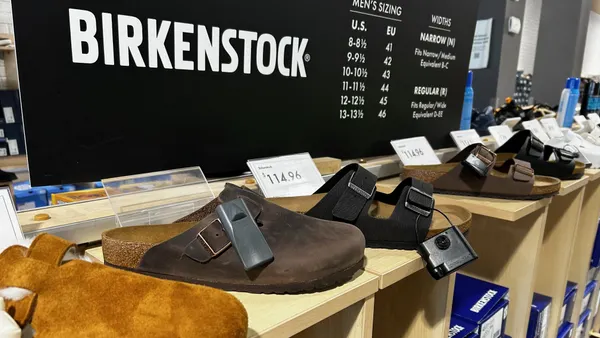Dive Brief:
-
A quarter of the products sold by Amazon itself change in price multiple times a day, but that number jumps to 71% for products sold by third-party sellers on its marketplace, according to a report emailed to Retail Dive from e-commerce analytics company Profitero.
-
From April through June this year, Profitero monitored prices of more than 100 best-selling products sold on both Amazon and its marketplace eight times each day, and found that marketplace sellers changed up their prices every two days, on average, versus the first-party site's four price changes per product over the full 60-day period.
-
Sophisticated algorithms and speedy computer-led responses drive that, leading to an unsustainable race to the bottom, as Walmart reacts to price drops on Amazon and matches them, and vice versa, Profitero said. In some cases, Amazon downgrades products that are priced too low, axing them from the site or relegating them to "add on" status and not eligible for Prime.
Dive Insight:
While consumers and sellers alike may think that Amazon itself is driving price competition, it's now often third-party marketplace sellers, on Amazon and Walmart, that initiate price-based skirmishes, according to the report. Dynamic pricing algorithms have enabled retailers to detect every online price change, including temporary promotions, and that's, "leading to race-to-the-bottom behavior and permanent drops in Average Selling Price," Profitero said.
Consumers are benefiting from as well as abetting the practice. Aided by their smartphones, 54% now habitually suss out prices, even shopping in store. And, while not as speedy as machines, they're now conditioned to not only search out the best online price, but also to wait for price drops, Profitero said.
Brands and retailers are also getting caught up in price-matching schemes that trigger price declines based not only on shelf prices but also "irregular" prices like rollbacks, coupons, combos like buy one get one (which get matched on a per unit basis) and special in-cart prices. Furthermore, some third-party sellers are offering low prices on merchandise from liquidation channels or gray markets, without regard for brand equity, pricing strategies or economics — yet those prices are still being matched, Profitero warned.
And while Amazon is keen to meet or beat Walmart's prices, some items priced too low could end up in Amazon's crosshairs, according to the report. Amazon has a method of cutting off sales of items priced too low to be profitably shipped, labeled "CRaP" or "Can't Realize any Profit."
"The CRaP designation also makes products ineligible for several Amazon programs, such as Amazon Marketing Services and Subscribe & Save," Profitero said, noting that it could even lead to delisting. "Much to their chagrin, some brands' best-selling products are being abruptly designated as 'CRaP,' Exclusively for Prime or Add-on — all designations that limit a product's availability or eligibility for purchase until Amazon's economics improve. These are some of the unfortunate consequences when pricing is at the mercy of machines."














